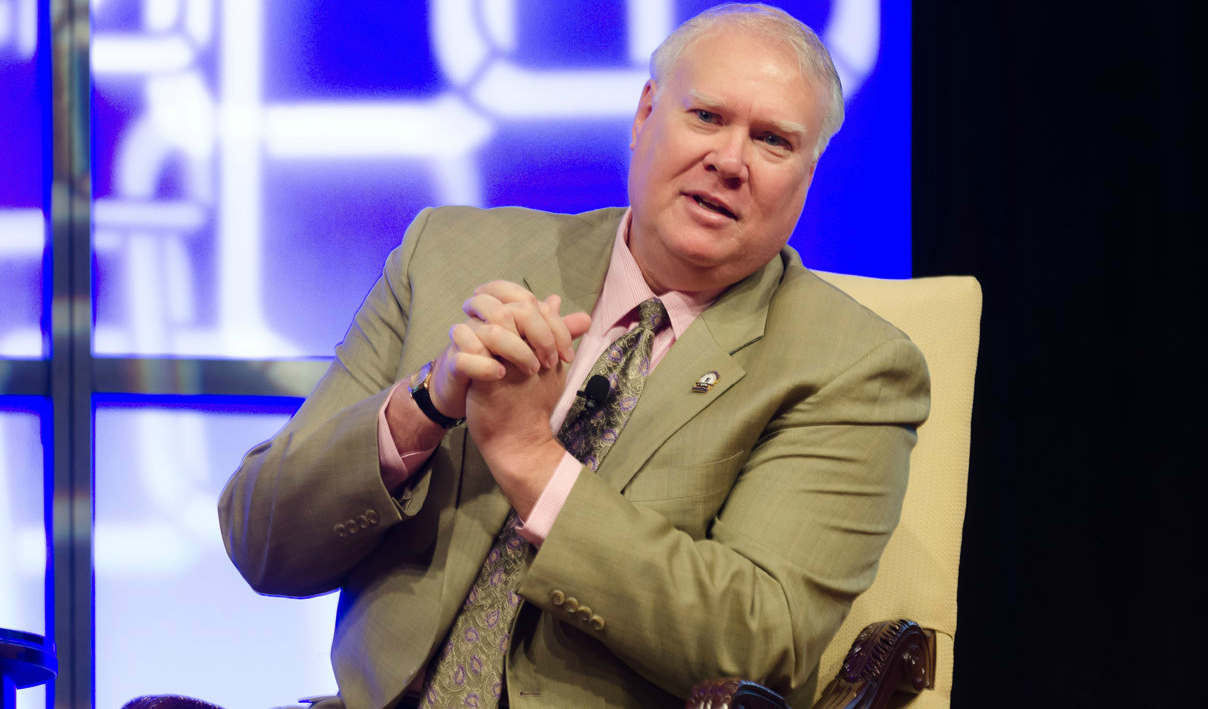
2011 NAR Profile of Home Buyers and Sellers
This summer, the National Association of Realtors (NAR) surveyed 5,708 home buyers and sellers for their 2011 National Association of Realtors® Profile of Home Buyers and Sellers. The study shows that home buyers are now “staying well within their means,” have higher incomes and are putting down higher payments than those surveyed for last year’s survey.
NAR 2011 President Ron Phipps notes that first time buyers had more challenging financial obstacles to overcome. Phipps said, “First-time home buyers fell to a 37 percent market share in the past year from a record high 50 percent in the 2010 study. Although last year’s findings were boosted by the home buyer tax credit, long-term survey averages show that four out of 10 buyers are typically first-time buyers. This segment is critical to a housing recovery because they help existing home owners sell and make a trade.”
Top 33 facts from the report
According to NAR, the following are the top takeaways from the report:
- Seventy-eight percent of recent home buyers said their home is a good investment, and 45 percent believe it’s better than stocks.
- The study shows the median age of first-time buyers was 31 and the median income was $62,400, up from $59,900 in the 2010 study.
- The typical first-time buyer purchased a 1,570 square foot home costing $155,000.
- The typical repeat buyer was 53 years old and earned $96,600, notably higher than the $87,000 median reported in 2010.
- Repeat buyers purchased a median 2,100 square foot home costing $219,500, with an estimated median payment of $1,006.
- The median downpayment for all home buyers was 11 percent, ranging from 5 percent for first-time buyers to 15 percent for repeat buyers.
- First-time buyers who financed their purchase used a variety of resources for the downpayment: 79 percent tapped into savings, 26 percent received a gift from a friend or relative, typically from their parents, and 7 percent received a loan from a relative or friend. Nine percent sold stocks or bonds and 8 percent tapped into a 401(k) fund.
- Ninety-four percent of entry-level buyers chose a fixed-rate mortgage. Fifty-four percent of first-time buyers financed with a low-downpayment FHA mortgage, and 6 percent used the VA loan program which requires no downpayment.
- Sixty-four percent of all buyers are married couples (up five percent from 2010), 18 percent are single women, 10 percent single men, seven percent unmarried couples and one percent other.
- Buyers searched a median of 12 weeks and visited 12 homes, both unchanged from 2010.
- Nine percent of recent buyers also own one or more investment properties, and four percent own at least one vacation home.
- Seventy-seven percent of respondents purchased a detached single-family home, nine percent a condo, eight percent a townhouse or rowhouse, and six percent some other kind of housing. The typical home had three bedrooms and two bathrooms.
- Fifty-one percent of all homes purchased were in a suburb or subdivision, 18 percent were in an urban area, 18 percent in a small town, 11 percent in a rural area and 3 percent in a resort or recreation area.
- The median distance from the previous residence was 12 miles, the same as in the 2010 study.
- More than half of buyers considered purchasing a foreclosure but didn’t buy one for a variety of reasons: 29 percent couldn’t find the right house; 15 percent each reported poor condition and a difficult process.
- Eighty-nine percent of respondents used real estate agents and brokers, other methods include directly from a builder, 7 percent; and directly from the previous owner, 4 percent. Sixty percent of buyers working with real estate professionals were represented by a buyer’s agent.
- To find their home, 88 percent use the Internet, 87 percent use real estate agents, 55 percent yard signs, 45 percent attend open houses and 30 percent review print or newspaper ads.
- When buyers were asked where they first learned about the home they purchased, 40 percent said the Internet; 35 percent from a real estate agent; 11 percent a yard sign or open house; 6 percent from a friend, neighbor or relative; 5 percent home builders; 2 percent a print or newspaper ad; 2 percent directly from the seller; and less than 1 percent from a home book or magazine.
- Ninety-one percent of home buyers who used the Internet to search for a home purchased through a real estate agent, as did 70 percent of non-Internet users, who were more likely to purchase directly from a builder or from an owner they already knew in a private transaction.
- Local metropolitan multiple listing service websites were the most popular Internet resource, used by 56 percent of buyers; followed by real estate agent websites, 46 percent; Realtor.com, 45 percent; real estate company sites, 40 percent; other websites with real estate listings, 38 percent; and for-sale-by-owner sites, 14 percent; other categories were notably smaller.
- The biggest factors influencing neighborhood choice were quality of the neighborhood, cited by 67 percent of buyers; convenience to jobs, 49 percent; overall affordability of homes, 45 percent; and convenience to family and friends, 39 percent. Other factors with relatively high responses include neighborhood design, 32 percent; convenience to shopping, 28 percent; quality of the school district, 27 percent; convenience to schools, 22 percent; and convenience to entertainment or leisure activities, 21 percent.
- Commuting costs continue to factor strongly in decisions regarding location, with 73 percent of buyers saying transportation costs were important.
- The biggest reason people buy a home is the simple desire to own a home of their own, cited by 27 percent of respondents, including 60 percent of first-time buyers. The next biggest primary reasons for buying were desire for a larger home or a job-related move, each cited by 10 percent of respondents; a change in family situation or the affordability of homes, 8 percent each; and desire to be closer to family, friends or relatives, 7 percent.
- The typical home seller was 53 years old and their income was $101,500. Sellers moved a median distance of 20 miles and their home was on the market for 9 weeks, up from 8 weeks in the 2010 profile. Forty-six percent moved to a larger home, 31 percent bought a comparably sized home and 23 percent downsized.
- While sellers had been in their previous home for a median of nine years, up from eight years in the 2010 study, first-time buyers plan to stay for 10 years and repeat buyers plan to hold their property for 15 years.
- The typical seller who purchased a home nine years ago realized a median equity gain of $26,000, a 16 percent increase, while sellers who were in their homes for 11 to 15 years saw a median gain of $57,900, or 39 percent.
- Home buyers thought the most important services agents provide are helping find the right house, and negotiating price and sales terms.
- Like sellers, buyers most commonly choose an agent based on a referral from a friend, neighbor or relative, with trustworthiness and reputation being the most important factors; 89 percent are likely to use the same agent again or recommend to others.
- Of sellers working with real estate agents, the study found that 80 percent used full-service brokerage, in which agents provide a range of services that include managing most of the process of selling a home from listing to closing. Ten percent of sellers chose limited services, which may include discount brokerage, and 10 percent used minimal service, such as simply listing a property on a multiple listing service. Realtors provide all of these types of services, as do non-member agents and brokers, with comparable findings for each year since questions about brokerage services were added in 2006.
- For-sale-by-owner transactions accounted for 10 percent of sales, above the record-low 9 percent in the 2010 study, but well below the record high of 20 percent set in 1987. The share of homes sold without professional representation has trended lower since last reaching a cyclical peak, which was 18 percent in 1997.
- Many FSBO properties are not sold on the open market. Factoring out private sales between parties who knew each other in advance, the actual number of homes sold on the open market without professional assistance was 6 percent.
- The median transaction price for sellers who used an agent was $215,000, well above the $150,000 median for a home sold directly by an owner, but there were differences in the findings. The median income of unassisted sellers was $82,500, in contrast with $101,500 for agent-assisted sellers.
- Unassisted sellers were much more likely to be selling a smaller home, and they were more likely to be in an urban or central city area. The most difficult tasks reported by unrepresented sellers are attracting potential buyers, getting the right price, and understanding and completing paperwork.
The practice of real estate is changing given these rapidly altered circumstances surrounding home buyers and sellers, and it is important to be informed!
Visualisation of NAR’s data released in Q2 2012, available here.
The American Genius is news, insights, tools, and inspiration for business owners and professionals. AG condenses information on technology, business, social media, startups, economics and more, so you don’t have to.







































